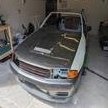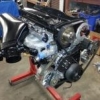Noisy Brembo's
Announcements
-
Similar Content
-
Latest Posts
-
By joshuaho96 · Posted
Do these support ABS tone rings? I feel like I recall either these or Brypar's uprights don't support ABS. -
Only lightly. I did write a passive aggressive reply complaining about Tesla drivers to see what response I'd get, then thought I'd be a little more mature than that. We'll see what happens. Spambots aren't very clever if they're going to do posts like this and then not follow up on pertinent advice/questions.
-
Thanks man, I appreciate that. I'll keep it in mind going forward, important to know.
-









Recommended Posts
Create an account or sign in to comment
You need to be a member in order to leave a comment
Create an account
Sign up for a new account in our community. It's easy!
Register a new accountSign in
Already have an account? Sign in here.
Sign In Now